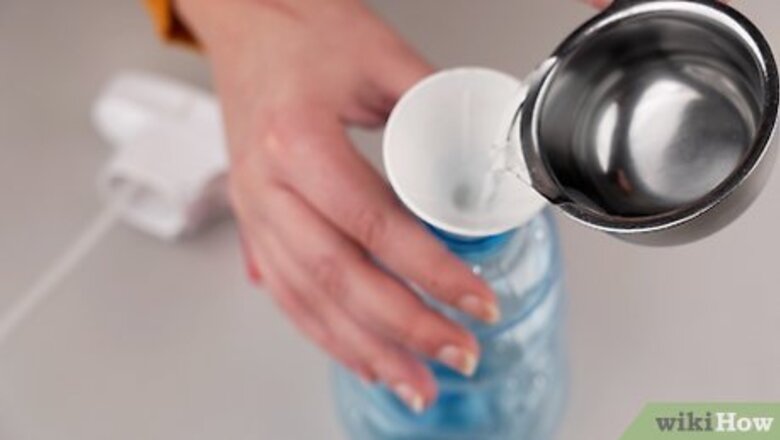
views
Disinfecting Insoles with Rubbing Alcohol
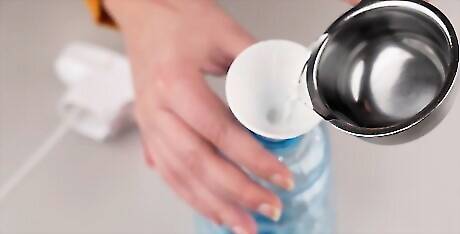
Mix together alcohol and water in a small spray bottle. Pour in an equal amount of each liquid and shake thoroughly to make sure they're properly distributed. Regular isopropyl alcohol has powerful antibacterial properties, making it perfect for cleaning delicate clothing items. If you don't happen to have any rubbing alcohol on hand, a slightly higher concentration of distilled white vinegar or hydrogen peroxide will also do the trick. Be warned, however—vinegar can leave behind its own odor that may take a few wears to fade.
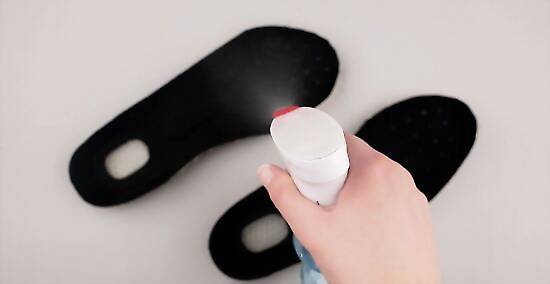
Spray the insoles with the alcohol mixture. Place the insoles on a flat, waterproof surface. Give each one a generous misting on both sides. Use as much alcohol as you need. It dries quickly, so there's no need to worry about getting the insoles too wet. As an alternative to a spray bottle, you can soak the corner of a clean cloth in alcohol and rub it into the insoles by hand. This method can be used to clean the rest of the shoe, as well.
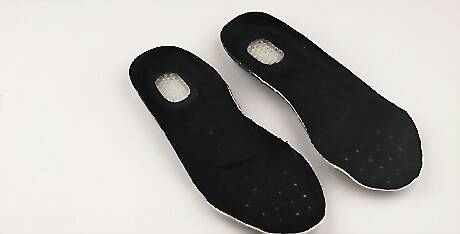
Set the insoles aside to dry. Relocate them outside or somewhere else where they can receive plenty of airflow. The alcohol will soon evaporate and take the water with it, leaving your insoles clean, disinfected and smelling fresh again. Don't wear the shoes again until they've had time to dry. Doing so will just introduce new germs and moisture.
Deodorizing Insoles with Baking Soda
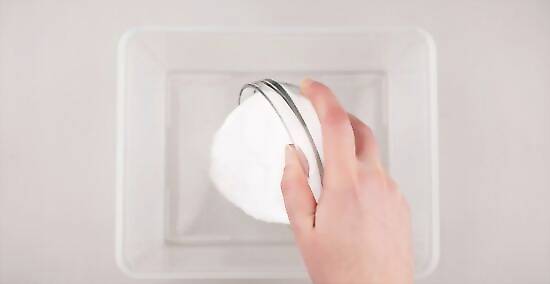
Fill a large container with baking soda. Shake a few ounces of the baking soda into a Tupperware container or quart-sized Ziploc bag. Make sure that the container you choose has a lid or some other means of closing and sealing. Baking soda is often touted for its ability to absorb and trap stubborn smells so that they can be dealt with without the need for deep-cleaning.
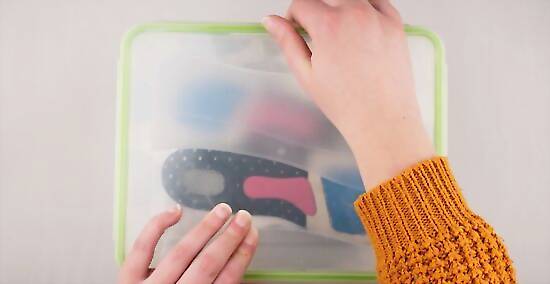
Place the insoles inside the container. Slip the insoles into the baking soda so that they're completely submerged. It may help to position them upside down so that the entire upper surface will stay in constant contact with the powder. The more surface area the baking soda covers, the better it will work. The insoles should be mostly dry before you apply the baking soda. If you're unable to find a suitable container, set the insoles out and sprinkle the baking soda directly over the top.
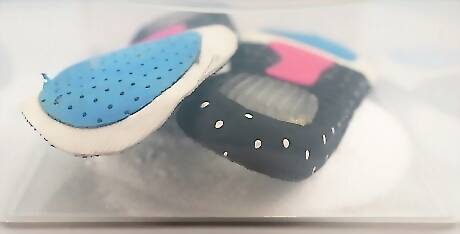
Let the insoles sit overnight. Seal the container and find an out of the way place to store it. By the time you wake up the following morning, the baking soda should have locked in the strongest odors. For best results, the baking soda should be allowed to do its thing for at least 6–8 hours. Baking soda is one of the simplest solutions for persistent odors, as it doesn't require any scrubbing, wiping or washing.
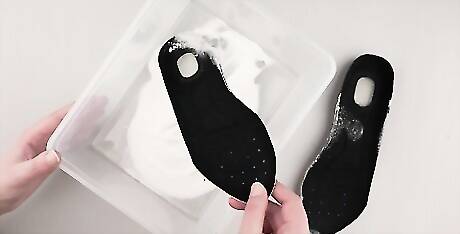
Remove and replace the insoles. Open the container and dispose of the baking soda. Shake the remaining powder off of the insoles and let them sit out in the open for a few minutes before putting them back in your shoes. Afterwards, you should no longer be able to notice any unwanted smells. Baking soda treatments can be used as often as you need to keep your insoles from stinking up your shoes.
Scrubbing Insoles with Soap and Water
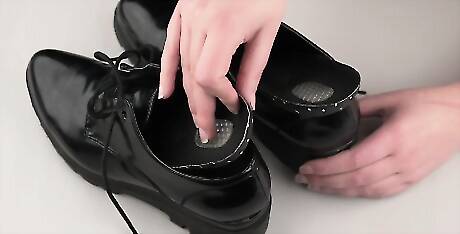
Remove the insoles from your shoes. Lift the insoles from the footbed and slide them out the opening. Brush off any loose dirt, dust, lint or other debris so that you can focus your attention on the more soiled spots. Place recently worn insoles somewhere nearby to air out before you begin cleaning. If your shoes don't have removable insoles, you'll have to carefully clean inside the shoe by hand. An unused toothbrush can come in handy in these situations. Put machine washable shoes through a gentle cycle while you work on the insoles.
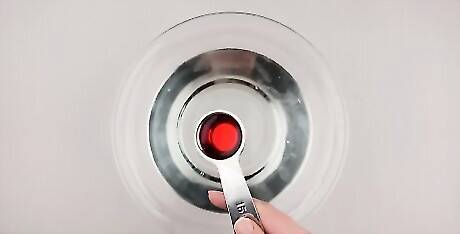
Combine soap and hot water in a large container. Fill the sink or a separate bucket and squeeze in a few drops of a mild liquid dish detergent that will blend easily in water. Stir the soap and water together to form a solution. Hot water will work better than cold for loosening stuck-on dirt and stains. In most cases, a gentle scrub with soap and water will be enough to eliminate unpleasant smells from lightly-worn insoles.

Dip a stiff-bristled brush in the soap solution. A nylon dish brush or similar tool will work well for this purpose. Wet the bristles and shake off the excess solution. You only want to use a small amount of soapy water at a time to prevent the insoles from getting too wet. The key to successfully cleaning most shoe insoles is not to oversaturate them with water. Too much moisture can damage insoles made from leather, foam and composite materials. You can also use a soft dish sponge regular cotton washcloth to do your scrubbing.

Brush down the entire insole with the soapy water. Work the soap solution into the surface of the insoles using tight, circular scrubbing motions. Concentrate on the areas around the heel and toes where stenches and stains are most noticeable. Once you're finished with the top of the insoles, flip them over and go over the bottoms as well. Rewet the brush with fresh soap solution as needed. After scrubbing the insoles, clear away visible soap residue with a clean cloth or sponge.
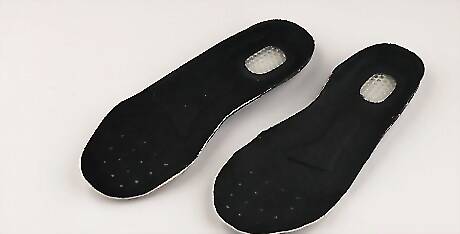
Allow the insoles to air dry. Now the insoles have been cleaned, you'll want to make sure they've had a chance to dry completely before wearing them again. This will prevent odor-causing bacteria from returning, as they're drawn to warm, moist places. Once they've dried sufficiently, slide them back into your shoes and put them through their paces. You can speed up the drying process by leaving the insoles in a well-ventilated area or propping them up near an air conditioner or space heater. If the weather is good, place the insoles out in the sun to dry. Not only will this air them out faster, the UV radiation from sunlight will actually help kill any lingering germs that the soap solution may have missed.

















Comments
0 comment